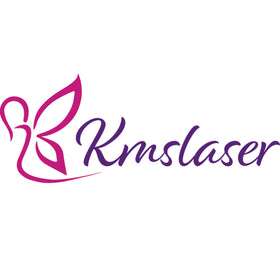Are you looking for an innovative therapy that can help you get faster and superior results? Shockwave therapy is a relatively new form of treatment that has proven itself to be a powerful, non-invasive solution for musculoskeletal pain. Not only does shockwave therapy lead to quick improvement in mobility, but it also helps speed up recovery time. To better understand the characteristics and effects of this amazing safe technique, we will explore how deep shockwave therapy goes within each tissue layer and its capability to rebuild destroyed tissues with increased blood circulation throughout the body.
Understanding how shockwave therapy works
Shockwave therapy is a revolutionary treatment that has helped many people overcome painful conditions. But how exactly does it work? The therapy involves using high-energy sound waves to stimulate healing in damaged tissues. These waves penetrate deep into the affected area, helping to break up scar tissue and increase blood flow. This increased blood flow delivers essential nutrient s and oxygen to the site,kickstarting the body's natural healing process.While the exact mechanism of action is still being studied, what we do know is that shockwave therapy is incredibly effective for a wide variety of conditions,from plantar fasciitis to shoulder pain. So if you're suffering from chronic pain, it might be worth considering this cutting-edge treatment option.
Exploring the different depths of shockwave therapy treatments
Shockwave therapy has become an increasingly popular treatment option for a variety of ailments, from plantar fasciitis to shoulder pain. But did you know that there are different depths of shockwave therapy treatments? Some are more superficial, focusing on the epidermal layers of the skin, while others go deeper into the targeted tissue. The depth of treatment depends on the type of injury or condition being treated. Superficial treatments are often used for conditions such as cellulite, while deeper treatments are used for injuries like tendinitis. It's important to talk to your healthcare provider to determine which depth of shockwave therapy is right for you. So, don't be afraid to explore the different depths of this fascinating treatment option.
Overview of the most common types of deep-tissue tissue applications
Deep-tissue therapy is a popular method of massage that targets the deeper layers of muscle and connective tissue in the body. There are several common types of deep-tissue applications, each with its own unique benefits. One such technique is myofascial release, which focuses on releasing tension in the fascia, a tissue that surrounds and supports muscles and organs. Trigger point therapy, another popular method, involves applying pressure to specific points on the body to relieve pain and tension. For those seeking a more intense treatment, Rolfing may be the way to go, which uses deep pressure to break up scar tissue and realign the body's structure. Whether you're an athlete looking to enhance your performance or simply seeking relief from chronic pain or tension, there's a deep-tissue application that can help you reach your goals.
Examining the risks and benefits of shockwave therapy depending on the depth of application
Shockwave therapy is a powerful tool that has gained popularity in recent years. It involves using high-pressure sound waves to stimulate healing and alleviate pain. However, as with any medical procedure, there are risks involved. When it comes to shockwave therapy, the depth of application plays a crucial role in determining the potential benefits and risks. For superficial applications, it can be an effective treatment with minimal risk of complications. However, for deeper applications, the risks increase, and caution must be taken to minimize the potential for harm. As with any medical treatment, it is essential to consult with a qualified healthcare professional to determine if shockwave therapy is appropriat e for your situation and to understand the potential benefits and risks.
Investigating which type of shockwave therapy may be best for each individual patient
Shockwave therapy is a powerful and effective treatment option for a variety of conditions, from plantar fasciitis to shoulder pain. However, not all shockwave therapy is created equal. That's why investigating which type of shockwave therapy may be best for each individual patient is so important. By tailoring our approach to the unique needs and circumstances of each person, we can ensure they receive the best possible treatment outcomes. Whether it's focused shockwave therapy or radial shockwave therapy, ur goal is to help patients get back to doing what they love with as little pain and discomfort as possible. So if you're considering shockwave therapy,let us help you determine which approach is right for you.
Looking at post-treatment care to ensure a successful outcome
In any medical treatment, post-care is just as important as the treatment itself. It is like the final push across the finish line. When it comes to dental procedures, the importance of post-treatment care takes center stage, especially if you want to enjoy a successful outcome. After all, you wouldn't want to go through the pain of root canal only for it to fail due to poor post-treatment care. Therefore, it is important to follow the instructions given by your dentist, which could include taking medication, avoiding certain foods and drinks and maintaining good hygiene practices. It may seem like a hassle initially, but taking the time to care for yourself properly after a dental procedure is the best way to ensure a successful outcome.
Shockwave therapy is a revolutionary, non-invasive tool that can be applied to a variety of deep tissue treatments for medical conditions. It is important to emphasize the understanding of how shockwave therapy works and because different depths may require different risks and recovery times. Therefore, determining which type of shockwave therapy may be best for an individual patient, along with providing careful post-treatment care, are key elements in ensuring successful outcomes. With more research being done each day, the potential for shockwave therapy applications are growing exponentially - from helping to heal fractures to healing sports injuries - making shockwave therapy an invaluable tool in modern medical care.

